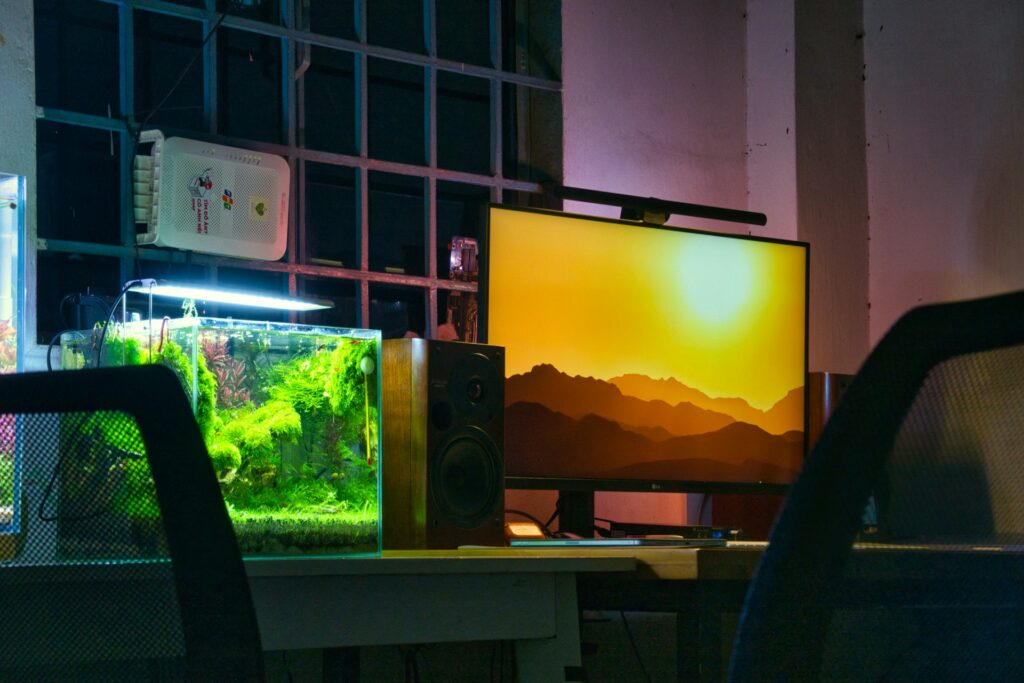What Distinguishes OLED Screens from LED Screens?

What Distinguishes OLED Screens from LED Screens?
The Significance of Screen Technology
In today’s world of technology, screens are the most essential component of any gadget, regardless of whether it is a television, a smartphone, a monitor, or a laptop. The visual clarity, color accuracy, energy economy, and even long-term durability of your display are all affected by the display you pick. The two most prevalent display technologies that are now in use are known as light-emitting diodes (LEDs) and organic light-emitting diodes (OLEDs). They both may seem same, but the way they function is rather different from one another, and depending on how you use them, each one has its own unique set of benefits.
What Exactly Is an LED Display?
Light-emitting diodes (LEDs) are used as the source of backlight in LED displays, which are basically liquid crystal display (LCD) panels. The liquid crystals do not generate light on their own; rather, they regulate the amount of backlight that is sent through them in order to form an image. Various types of LED technology have emerged as a result of advancements in the field. These include edge-lit LEDs, full-array backlighting, and Mini-LED, which employs LEDs that are much smaller in size in order to achieve enhanced contrast.
What Exactly Is an OLED Screen?
Organic light-emitting diode is the full name for OLED. OLED pixels, in contrast to LED displays, are able to generate their own light independently of one another. In other words, each pixel is able to be switched on or off completely independently of the others since there is not a separate backlight. As a consequence, OLED screens are capable of reaching ideal black depths and very high contrast ratios. This is why they are extremely popular in high-end televisions, monitors, and smartphones.
Brightness and HDR Performance
LED screens are well known for their ability to achieve increased peak brightness, particularly when they are equipped with Mini-LED technology. Because of this, they are perfect for spaces with much of light and for showcasing HDR (high dynamic range) video.
OLED Screens: Although OLED screens are capable of achieving high levels of brightness, they often do not reach the same peak brightness levels as LED panels. Nevertheless, their capacity to totally shut off pixels results in spectacular high dynamic range (HDR) contrast, despite the fact that their absolute brightness is less than that of other displays.
Contrasting and Black Levels
LED Screens: A little amount of light is able to “bleed” into dark places due to the fact that these screens depend on a backlight, which causes black colors to seem more like dark gray. Although local dimming enhances this, it is not without its flaws.
OLED Screens: Each and every individual pixel on an OLED screen has the ability to completely shut off, resulting in absolute blacks and a contrast ratio that is almost endless. When it comes to watching movies and playing video games that include gloomy situations, OLEDs have a significant edge because of this.
Color Accuracy and Vividness
LED screens: They are capable of producing vivid colors, particularly in the case of more expensive versions that are equipped with quantum dot technology (QLED). On the other hand, when OLED is placed next to other display technologies for comparison, the colors might seem to be less realistic.
OLED screens are renowned for their ability to produce exceptionally accurate colors and hues that are both deep and lifelike. The self-emissive pixels ensure that colors remain brilliant and free of distortion regardless of the direction from which they are seen, which results in a consistent viewing experience from a variety of perspectives.
Angles of Observation
LED Screens: Colors and contrast may seem to be different when seen from the side, however this problem is less apparent when using higher-quality panels such as IPS.
OLED screens are a fantastic choice for group watching because they are able to preserve exceptional contrast and color even when viewed from very steep angles.
Response Time and Gaming
LED Screens: While LED panels that are now available have acceptable reaction times, they are often slower than OLED screens. In games that is quickly paced, motion blur may be more apparent.
OLED Screens: Extremely short reaction times and negligible input lag are characteristics of these screens. Gamers like organic light-emitting diode (OLED) monitors and televisions because of the fact that many of them are compatible with sophisticated gaming features such as variable refresh rates.
Burn-In and Expected Lifespan
Screens made using LED technology are less likely to have picture retention or burn-in, which makes them a more suitable option for static information such as spreadsheets or news tickers. The likelihood of lasting ghost pictures appearing is minimal, despite the fact that their backlights may deteriorate as time goes on.
OLED screens are susceptible to burn-in if they are used to display the same picture for extended periods of time. Nonetheless, the likelihood of this happening is much reduced in contemporary OLEDs because to the inclusion of pixel-shifting and screen-saver technologies.
Energy Efficiency
LED screens are more efficient in environments with strong lighting since the backlight lights the whole screen independent of the material shown on it.
OLED screens are more efficient than other types of screens when it comes to presenting dark or mixed pictures since black pixels are switched off. Nonetheless, it is possible for situations that are very bright to use more power than LED.
Price and Availability
LED screens may be found at a wide variety of price points, from the most affordable to the most expensive. They are the preferred option for those who want to buy huge TVs but have a limited budget since they are more reasonable when they come in bigger sizes.
OLED Screens: Although their costs are slowly decreasing, they often cost more than other types of screens. In comparison to LED televisions, OLED televisions of a larger size continue to be more expensive.
Durability and Use Cases
LED displays: A dependable option for workplaces, schools, and other locations in which displays are used for extended periods of time and on a regular basis.
OLED displays are ideal for home theaters, high-end smartphones, and gaming settings where the most important factors are image quality and immersion.
Which of These Options Is the Best for You?
If you are looking for the following, then LED is the best choice for you:
- Screens with higher brightness for use in environments that are well-lit or sunny
- In particular, for bigger sizes, this is a more cost-effective choice.
- Reduced anxiety over burn-in for heavy-duty applications
If you are looking for the following, OLED is the best choice:
- Pitch-perfect blacks and breathtaking contrast
- Colors that are precise and viewing angles that are broad
- The most enjoyable experience in gaming or film
While both LED and OLED displays provide outstanding performance, they are designed to meet the demands of various budgets and requirements. Light-emitting diode (LED) panels are adaptable, cost-effective, and functional for daily use, but organic light-emitting diode (OLED) screens excel in image quality, immersion, and high-end experiences. When you have a thorough understanding of the benefits and trade-offs associated with each technology, you are better able to make a decision that is compatible with your lifestyle, and you can be confident that you are getting the most value out of your screen.




